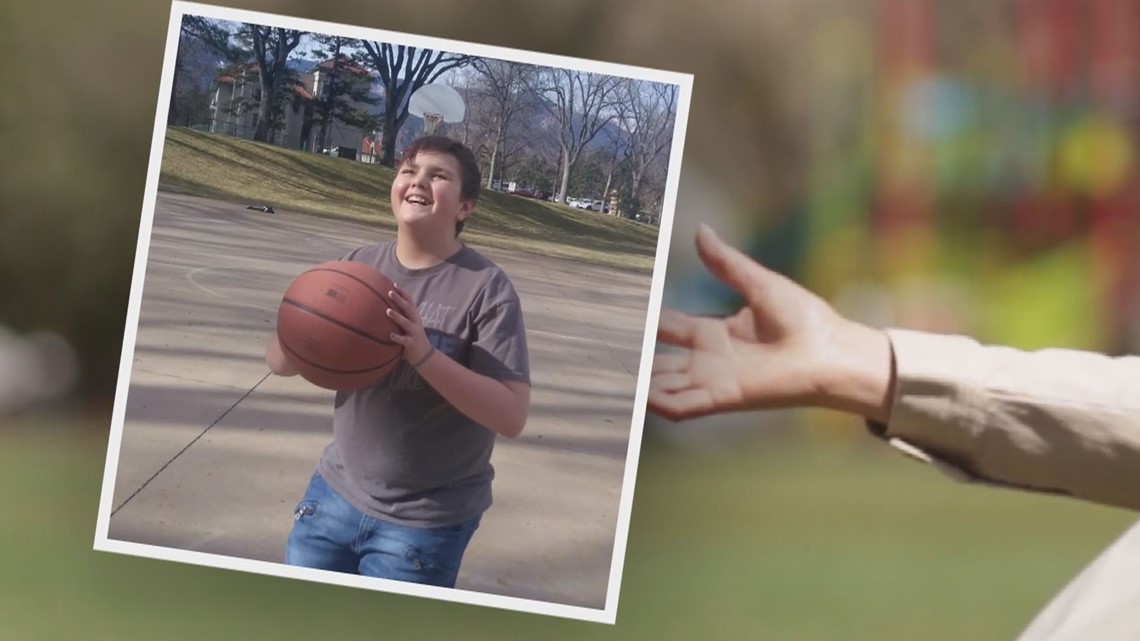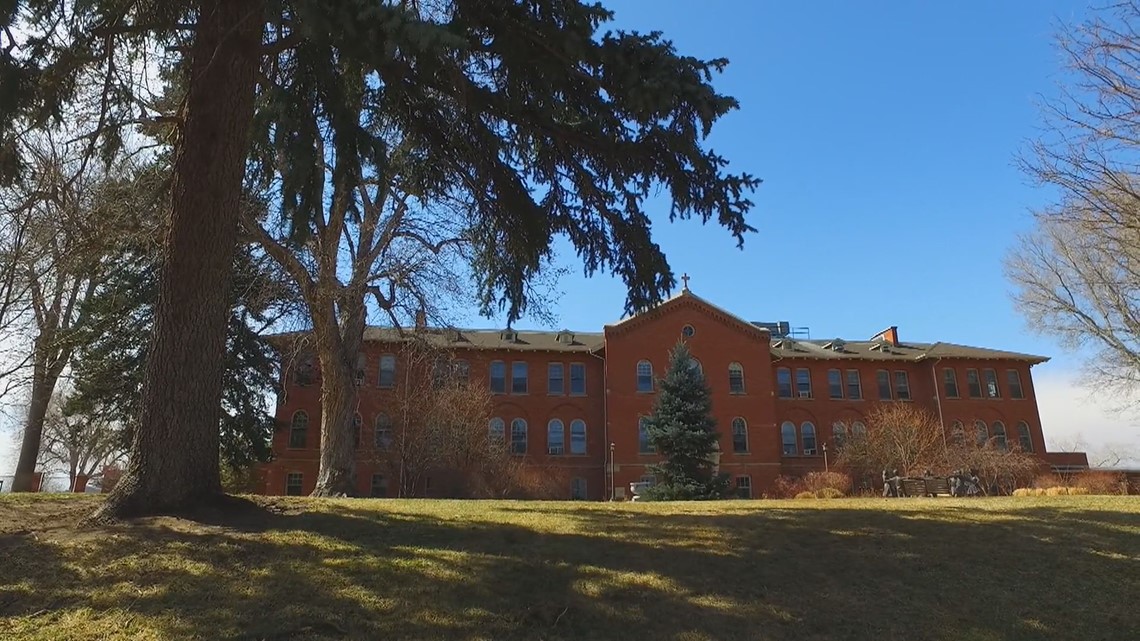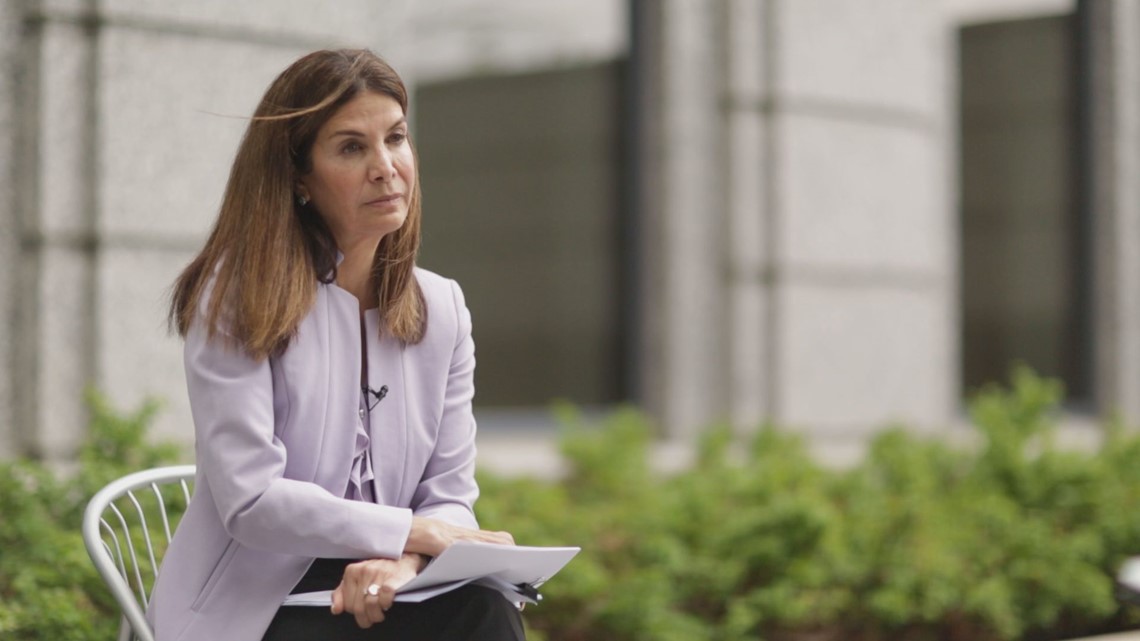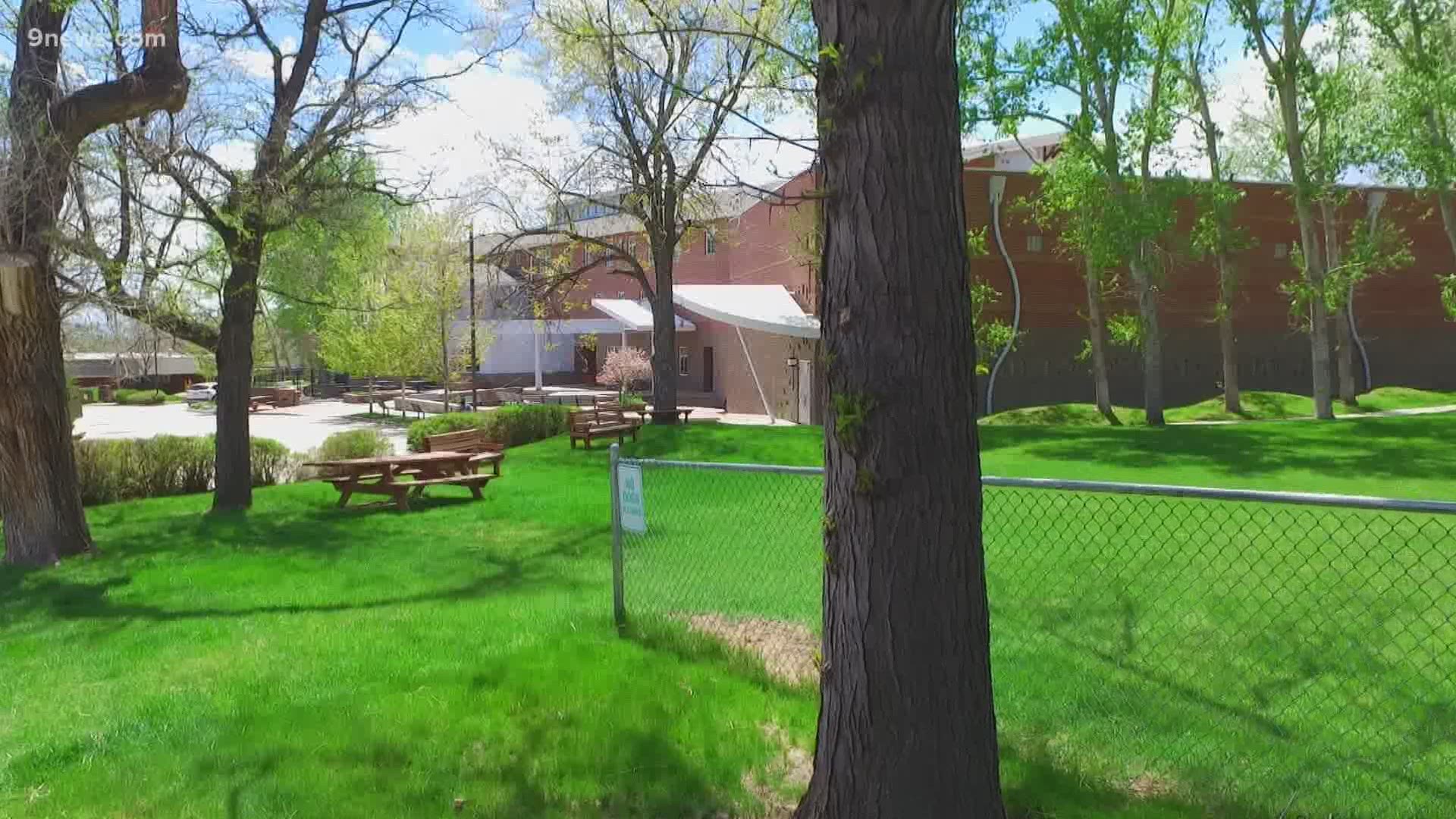DENVER — When a child dies from abuse or neglect in Colorado, a team of experts reviews the disturbing details, seeking reforms that could make kids safer.
But when 12-year-old Timmy Montoya-Kloepfel was able to run away from a state-licensed residential child center, roam the streets alone in the dark, and then die from injuries he suffered as a car ran him over, there was no review.
Timmy’s death, Denver child welfare officials determined, did not fit the state’s child fatality review criteria. What happened June 21 after Timmy ran away from Tennyson Center for Children was deemed the result of a vehicle accident or suicide — but not neglect.
The decision not to investigate, some child advocates say, was a lost opportunity to protect kids living in Colorado’s 52 residential treatment centers. The homes are places of last resort for foster youth who’ve blown through multiple placements and for kids who have such severe mental health issues that they’re not safe living with their parents.
Editor’s note: This is the third story in a joint Colorado Sun/9NEWS series examining residential treatment centers where Colorado houses foster youth and kids with severe behavioral issues. See more from The Colorado Sun by signing up for The Sunriser newsletter.


The absence of a review highlights a gap in the child welfare system, which critics say is so shrouded in the cloak of confidentiality that it’s difficult to expose problems and identify reforms. State child welfare officials have refused to release the number of abuse and neglect allegations at residential treatment centers, let alone how many of those complaints were investigated by caseworkers.
In their denial of records requested by The Sun/9News, Colorado Department of Human Services officials cited privacy laws intended to protect the addresses of people who report suspected abuse. But in this case, the addresses are state-licensed child residential centers.
When child welfare officials determined Timmy’s death did not qualify for an investigation, Colorado’s child protection ombudsman opened her own. But under current law, she lacks the power to review critical documents that would shed light on how Timmy was able to run away and how many times he had run away before.
“There’s a lot to learn about all the different facilities he went to before this final one and unless someone reviews that death, that knowledge will never be able to help kids in the future,” child protection ombudsman Stephanie Villafuerte said in an interview.
About 40% of child deaths from abuse and neglect since 2014 did not receive a review that would result in findings available to the public, she said. Deaths are investigated by the Child Fatality Review Team only when the youth had child welfare involvement in the previous three years and caseworkers determine that abuse or neglect was the cause of death.
The strict criteria for review creates an “information gap,” said the ombudsman, who called fatality reviews the “memoirs of those who can no longer speak for themselves.”
“These children teach us in death what they could not show us in life,” she said to lawmakers this spring. “We have a duty, and indeed an obligation, to bear the weight of their loss and to learn from their children’s deaths.”
Like all child fatalities in the state, Timmy’s death will be reviewed by the state health department. But that type of review does not result in findings that would change the child welfare system, and Timmy’s death will appear only as an aggregate number, likely under a category of vehicle accidents or suicide, since he was lying in a road when he was struck by the vehicle. The health department team produces an annual report about child deaths from suicide, firearms, drowning and various other reasons, attempting to identify trends.
It’s not case-specific enough to bring about change in the child welfare system, the ombudsman said, and not substantial enough to provide closure for Timmy’s mother, Elizabeth Montoya.
“We must hold agencies and organizations accountable for the care of our children,” said Montoya, who testified this spring in favor of legislation that would give the ombudsman greater access to child welfare documents. “This is the only way to bring about real, systemic change.”
While Jay Sudowski’s 12-year-old niece lived in a Denver residential treatment center for two years, he says he was kept in an information black hole.
When Sudowski, who is the girl’s legal guardian, called the cottage at Tennyson Center for Children, where his niece lived, it was rare that someone picked up the phone. When his niece called him, she wasn’t allowed to say the names of her roommates, so he could never keep up with who she was fighting with or whether she was even still living with the same kids.
The center would call to inform him when his niece needed “management” — “a nice way of saying we pinned your kid down because she was being unsafe,” he said. His niece moved out of Tennyson and into a group home in February.
It wasn’t until Sudowski read an article in The Colorado Sun in March that he learned Denver County child welfare officials had received 113 complaints about Tennyson in 2020, yet the county had assigned just eight for further investigation, according to an ombudsman investigation. Youth at the center in northwest Denver were able to break into a drug cabinet, with one child requiring four days of dialysis after overdosing. A boy ran away and was struck by a vehicle and died. A 12-year-old had sex with an 11-year-old, according to records obtained by The Sun from the state licensing division and the child protection ombudsman.
But Sudowski, whose niece was living in the treatment center while many of those incidents occurred, had no way of knowing until he read it in the news.
“It was absolutely gut wrenching,” Sudowski said. “I literally cried for like an hour. We let her be there for so long. We let her go back there. I was just in shock.”
Sudowski’s niece, who was 5 when she came to live with him because of her parents’ addiction issues, went into residential care about two years ago after violent, dangerous behavior at home and repeated trips to the hospital for psychiatric treatment. Sudowski wasn’t given a list of residential treatment centers and statistics informing him of cases of institutional abuse or other licensing concerns. He said he was given one option: a place that had an open bed.
“You trust that it’s a safe place because it’s licensed by the state,” he said. “Turns out that’s not good enough. You can’t actually trust that. There absolutely has to be some way for families to get information about the quality of these programs.”
Sudowski filed a public information request with Denver child welfare officials seeking records on how often Tennyson was accused of institutional abuse, and how many accusations were founded.
“No one will tell me,” he said. “These are hard kids, and they have lots of big behaviors that are really scary. I think the general public does not even understand the severity of these behaviors. But kids having sex with each other? Getting medication in locked cabinets? No one is sharing that information with the families. How are we supposed to know?”
Fraction of abuse allegations are investigated
In Colorado, parents can search a public database of daycare centers to see licensing violations. There is no similar database for child welfare, despite a 2019 plea from the state child protection ombudsman for the state Department of Human Services to create one.
“If I am a parent who needs to place my child in a facility, I should be able to understand what that safety record looks like,” Villafuerte said. “I can’t get that information as a parent.”
The ombudsman’s investigations into El Pueblo Boys & Girls Ranch in 2019 and the Tennyson Center this year exposed the high volume of abuse and neglect calls flowing from the facilities, and the fact that they are rarely investigated by local county child welfare officials.
El Pueblo, which in 2017 was ordered by the state to close, was the subject of 243 reports of abuse and neglect in the span of a year, yet only about 12% of those were assigned a review by a caseworker.
In one case, a child’s arm was reportedly twisted behind his back and a video of the incident was deleted. In another, a girl was able to escape the ranch and board a train. She told authorities she was starving and that kids at the center bullied each other.
And when the ombudsman investigated Tennyson Center, she found a similar pattern. Denver County child welfare officials had received 113 complaints about Tennyson Center in 2020, yet the county had assigned just eight of those for further investigation, she found. The center shut down its residential program in February under threat of state licensing violations.


Residential centers are required to report allegations of mistreatment made by children against staff, so high call volumes to the hotline are expected. But the ombudsman has expressed concern that county child welfare officials don’t investigate as often as they should.
Denver child welfare officials said they received 188 reports of institutional abuse about Tennyson last year, including critical incident reports regarding accusations of inappropriate restraint and supervision. Each institutional abuse report is reviewed by two child welfare employees and a supervisor, while the critical incident reports are reviewed by the state, said Adriana Lopez, spokeswoman for Denver Human Services.
Villafuerte also uncovered failure in communication between Pueblo County and the state division that licenses residential treatment centers for youth. The county was screening out allegations of institutional abuse at El Pueblo, believing the state licensing division would look into them. And at the same time, state regulators said they did not look into several concerning incidents noted during on-site inspections because they thought the county would handle it.
Since then, the state has changed its protocols to avoid a similar breakdown, said Minna Castillo Cohen, director of the Office of Children, Youth and Families. Now, state regulators who license child residential centers can look at complaints that were screened out and open their own investigation if they choose, she said.
Also, state child welfare officials created a team to double check whether counties properly handle allegations of abuse and neglect inside the walls of residential centers. The team has reviewed allegations that were screened out by county officials and determined that 99.7% of the time, counties made the right call not to investigate, Castillo Cohen said.
“Our team does an excellent job of overseeing those facilities, but we can always do better when the safety and care of kids is at stake,” Castillo Cohen said.
State officials are discussing how to share public data about residential centers but have yet to determine how to provide useful information to families without revealing confidential information about children, Castillo Cohen said.
But, she acknowledged, transparency is an issue the state needs to improve.
The ombudsman, however, is frustrated by the delay in state response to her recommendations to improve conditions at residential child centers. Villafuerte’s office has no power to force policy change and can only recommend that state officials react to her findings.


She said she’s still waiting, three years after making a recommendation, to find out whether state child welfare officials will require counties to use a six-person team to review allegations of abuse in institutions. While counties are trained to use six-person teams, state rules say that at least two caseworkers and a supervisor have to review every hotline call.
“We should be proactive,” Villafuerte said. “So many things go wrong and then we get to the point where a facility needs to be closed. We don’t have enough facilities in our community right now. If we keep allowing this neglect to continue, we won’t have any facilities for these kids who desperately need them.”
Sun/9NEWS filed court case against state
While reporting this investigative series, The Colorado Sun and 9NEWS sued the Colorado Department of Human Services after the agency refused to release aggregate data showing the number of allegations of abuse and neglect at various youth residential treatment centers.
The department claimed it could not release the number of calls to the child abuse hotline regarding issues at the centers and whether those calls were assigned to a caseworker for review.
In denying the request, made under the Colorado Open Records Act, state officials said the information was confidential. The department cannot release the “address of any child, family or informant in a child abuse or neglect report,” state officials said. In the legal filing, The Sun/9News countered that disclosing the number of hotline calls would not lead to the identification of children in the facility or the person who reported to the hotline.
The case is ongoing.
Despite feeling in the dark about Tennyson’s troubles, Sudowski knew things were rough for his niece while she lived at the residential center.
The worst was when staff informed him that his niece was part of a small group of kids who trashed the cottage where they were living, breaking windows with rocks and running on and off campus, out of control, for about eight hours.
The mayhem began when a new child moved into the cottage and three kids who lived there threw paint on the new boy’s clothes and other belongings.
“It boggles my mind how something like this could be allowed to go on for so long,” Sudowski said. “They literally damaged the cottage so much they couldn’t stay there. Thankfully, nobody got hurt that I’m aware of.”
Sudowski has trouble imagining his niece’s life as an adult and how she will get through the next six years until she turns 18. Sudowski and his wife, who have four other children including two adopted from foster care, can’t let the girl return to live with them because it’s not safe for the other children, he said. “It’s really just not possible,” he said. “I wish it was.”
In the past while living at his home, his niece would run away and threaten to hurt herself. If Sudowski was at work, his wife would have to choose between going after her or watching their baby and toddler.
“We thought at a treatment center there would at least be enough people around, and it turns out that is not the case,” he said.
Sudowski’s niece was diagnosed with reactive attachment disorder, a result of bouncing around to various caregivers and in and out of the child welfare system the first few years of her life.
“She literally lacks the ability to establish and maintain relationships with people,” he said.
He called the system of residential care a “conveyor belt of brokenness.”
“Long term, you have a broken human,” he said. “A broken adult.”
9NEWS reporter Jeremy Jojola and 9News investigative producer Zack Newman contributed to this report.
SUGGESTED VIDEOS: Investigations from 9Wants to Know

